The 25th Summer Deaflympics Tokyo 2025 will be held next year for a period of 12 days from November 15 to November 26 in and around Tokyo. Komazawa Olympic Park General Sports Ground will serve as the venue for the track & field, handball, and volleyball events at this tournament. Setagaya City, where the venue is located, is a tranquil residential area situated in a rich natural environment. With Komazawa Olympic Park as your starting point, this route will take you to a variety of spots where you can experience the area’s nature, history, and culture.
03.
05.
Start at Komazawa Olympic Park ➡ Approx. 15-minute walk ➡ Take the Tokyu Den-en-toshi Line from Komazawa University Station, get off at Sangen-jaya Station ➡ Approx. 3-minute walk ➡ Sky Carrot Observation Lobby (26th floor of Carrot Tower) ➡ Approx. 1-minute walk ➡ Take the Tokyu Setagaya Line from Sangen-jaya Station, get off at Miyanosaka Station ➡ Approx. 5-minute walk ➡ Gotokuji Temple ➡ Approx. 5-minute walk ➡ Take the Tokyu Setagaya line from Miyanosaka Station, get off at Sangen-jaya Station ➡ Approx. 1-minute walk ➡ Take the Tokyu Den-en-toshi Line from Sangen-jaya Station, get off at Futako-tamagawa Station ➡ Approx. 9-minute walk ➡ Kishin-en Garden (inside Futakotamagawa Park) ➡ Approx. 9-minute walk ➡ Take the Tokyu Oimachi Line from Futako-tamagawa Station, get off at Kaminoge Station ➡ Approx. 5-minute walk ➡ The Gotoh Museum
Komazawa Olympic Park
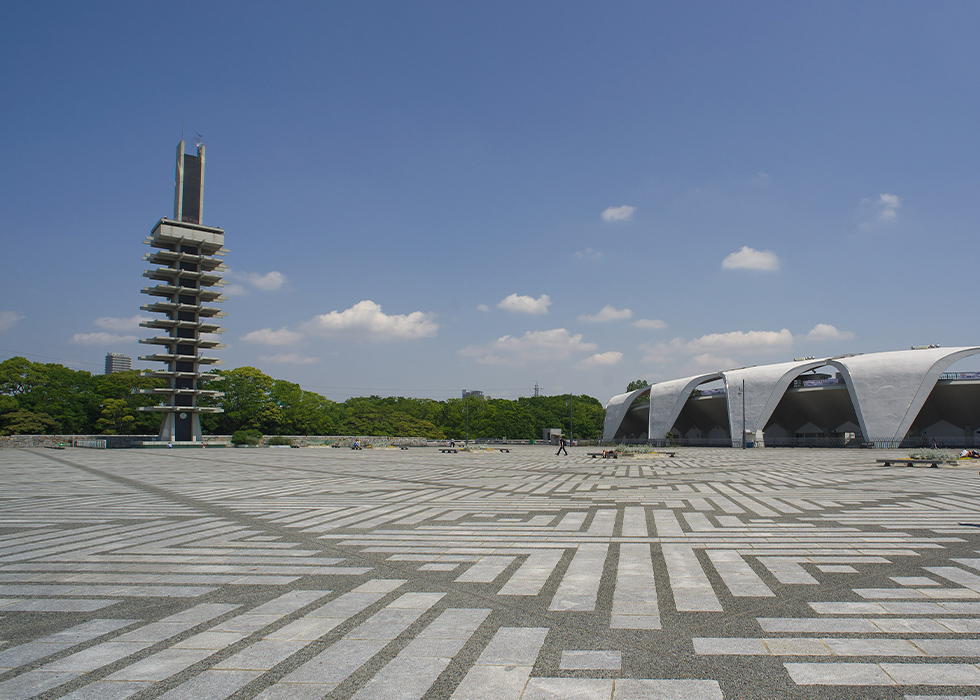
Komazawa Olympic Park was the second venue for the 18th Olympic Games held in Tokyo in 1964, and served as the venue for the wrestling and volleyball events. The sprawling 410,000 m2 site includes a memorial tower, built to commemorate the Tokyo Olympics and the symbol of Komazawa Olympic Park, as well as sports facilities such as athletic fields and a gymnasium. There is also a jogging course of approximately 2.14 km and a cycling course of approximately 2.08 km. This park is well-known as a comprehensive sports park where visitors can enjoy playing sports, walking, and dining at the restaurant on the lush, green grounds.
Address: 1-1 Komazawakoen, Setagaya-ku, Tokyo
https://www.tokyo-park.or.jp/park/komazawa-olympic/index.html
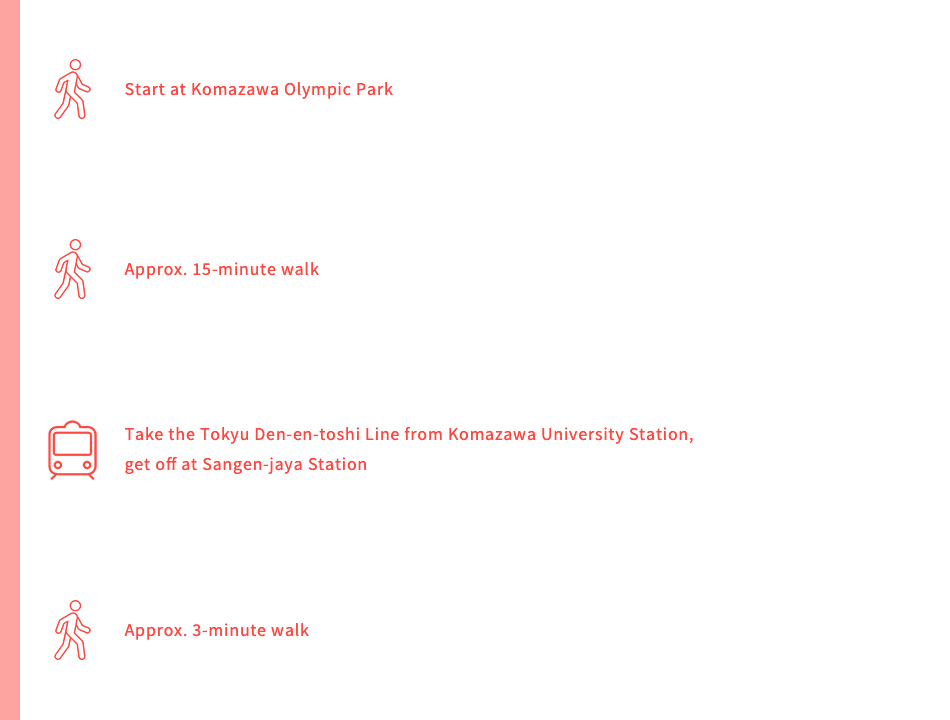
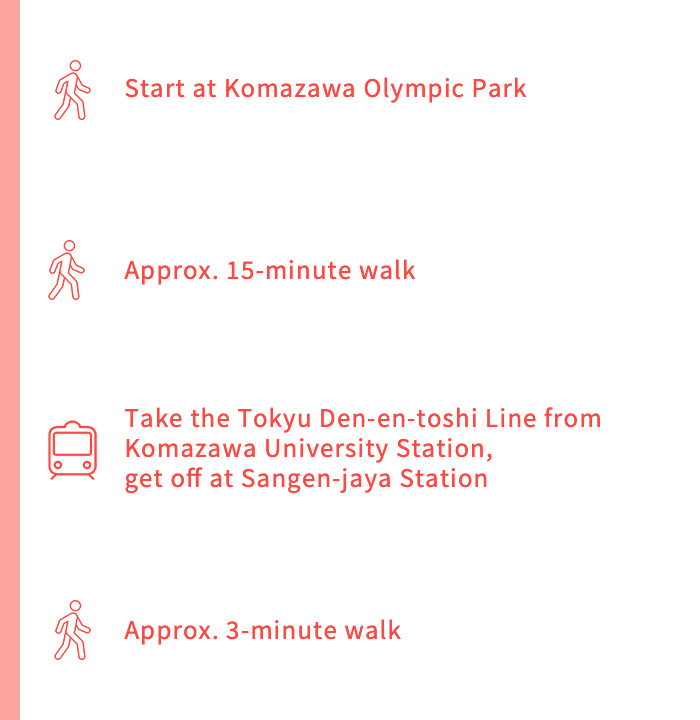
Sky Carrot Observation Lobby (26th floor of Carrot Tower)
The Sky Carrot Observation Lobby on the 26th floor of Carrot Tower, which is directly connected to Sangen-jaya Station, is one of Setagaya City’s best places for great views. This observation area lets you take in the scenery from 124 meters above ground. The observation area on the west side offers a panoramic view of western Tokyo, and depending on the season, you may even be able to see Mt. Fuji. From the east side’s observation area, you can see views of Tokyo Tower and other downtown landmarks, making it a popular spot for nighttime viewing. There is also a café and restaurant on-site where visitors can enjoy some quality time while they appreciate the spectacular scenery of Tokyo.
Address: 26F Carrot Tower, 4-1-1 Taishido, Setagaya-ku, Tokyo
https://www.city.setagaya.lg.jp/mokuji/kusei/012/002/d00004091.html
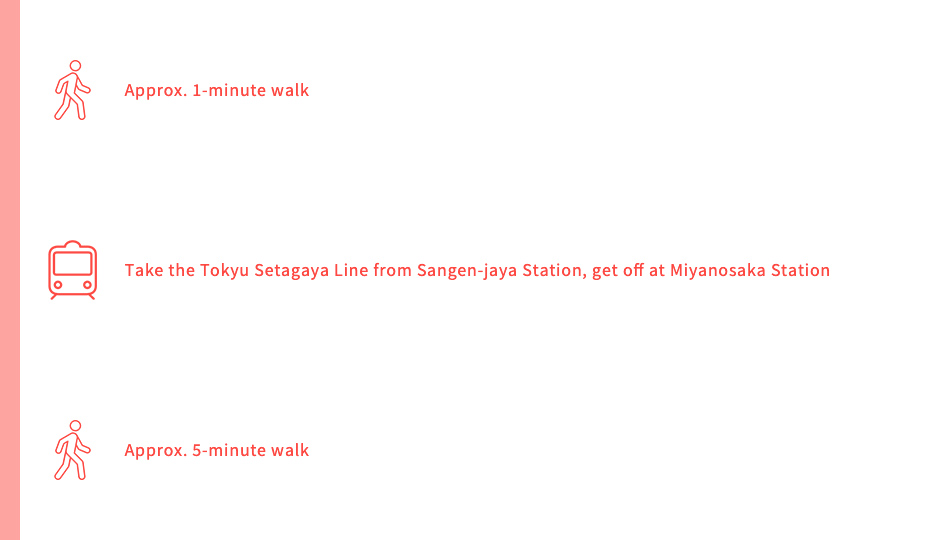
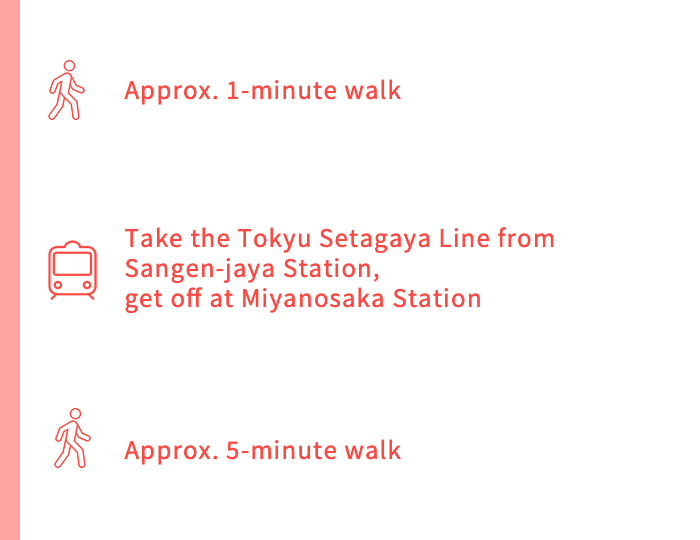
Gotokuji Temple
Take a train from Tokyu Setagaya Line Sangen-jaya Station, located right next to Carrot Tower, and get off at Miyanosaka Station. Make your way through a quiet residential area, at the end of which you will arrive at Gotokuji Temple, a temple of the Soto sect of Buddhism. This site is also known as the birthplace of the beckoning cat statue, based on the legend that during the Edo period (1603-1868), a cat in front of the temple gate beckoned Lord Ii Naotaka of the Hikone Domain, and in doing so, saved him from getting struck by lightning. On the grounds of the temple you will find the Shofuku-den hall, which enshrines this cat that beckons good fortune as a “Maneki Neko”, and many people come here to pray for safety for their families, prosperous business, and good luck. It is best to keep in mind that temples are religious institutions. Please follow the appropriate worshipping manners during your visit.
Address: 2-24-7 Gotokuji, Setagaya-ku, Tokyo
https://gotokuji.jp/en/
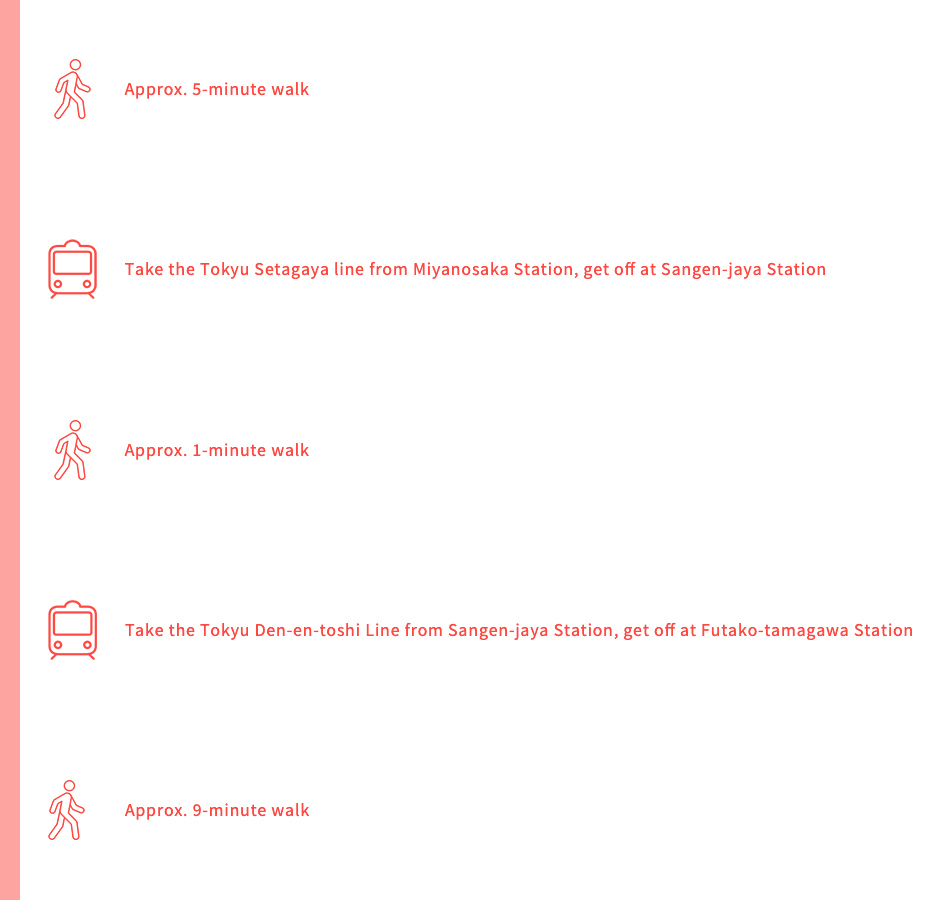
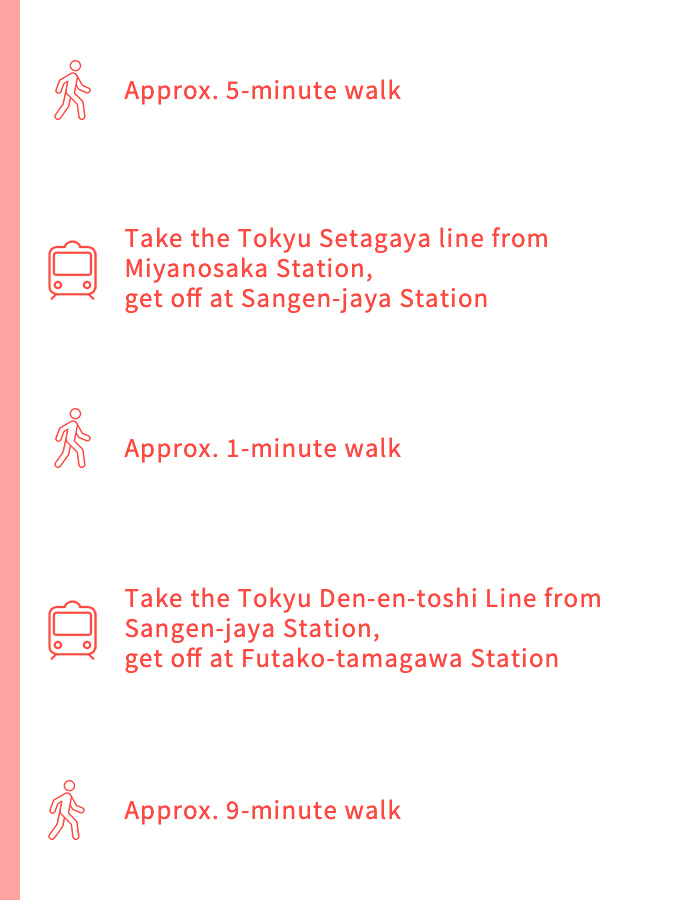
Kishin-en Garden (inside Futakotamagawa Park)
Futako Tamagawa is one of the few places in Setagaya City that still retains its natural scenery, but at the same time it is a bustling area that serves as the western gateway to Tokyo. Located amidst the greenery of the Kokubunji cliff line and the Tama River waterfront, this garden is a popular place for residents and tourists alike to relax.
The name “Kishin-en” is an expression of the desire to return to nature in the city, and the garden is inspired by the natural features that define the Setagaya and Futako Tamagawa areas, such as the Tama River and Hatonosu Valley. The garden is also made with Universal Design in mind to ensure that everyone can enjoy the atmosphere of Japanese culture at this site.
Address: 1-16-1 Tamagawa, Setagaya-ku, Tokyo
https://www.city.setagaya.lg.jp/mokuji/kusei/012/015/001/010/d00124898.html
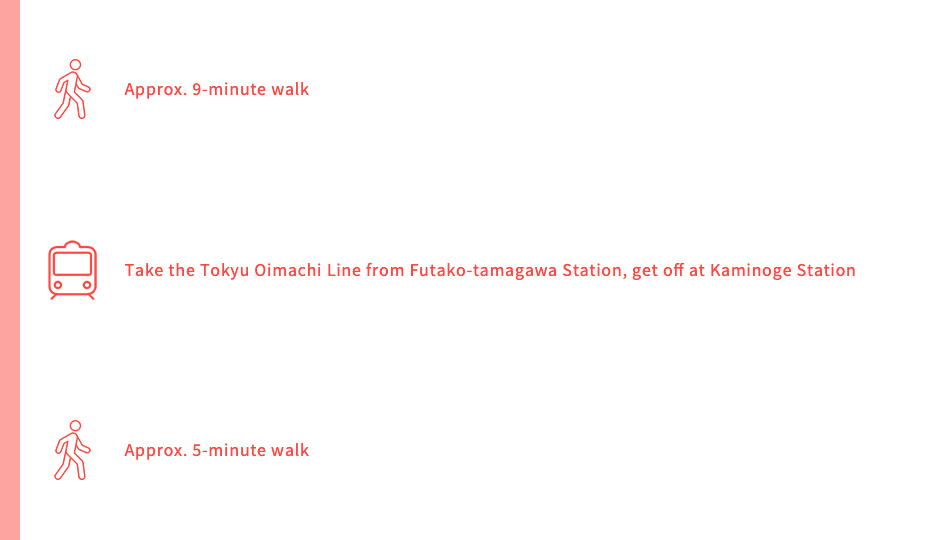
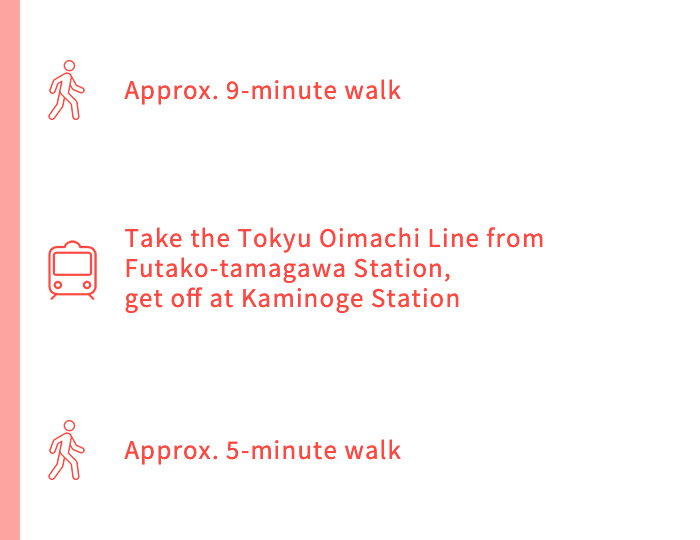
The Gotoh Museum
The Gotoh Museum is a privately operated museum located in Kaminoge, a quiet residential area in Setagaya City. The museum opened in 1960 as a venue for displaying Japanese and other eastern antiques that Keita Gotoh, the man who laid the foundation for the rise of the Tokyu Group, spent half of his life collecting. A number of masterpieces are housed here, including the national treasures “The Tale of Genji Scroll” and “Murasaki Shikibu Nikki Emaki”, and it also holds a wide range of exhibitions and other activities. The total area of the site is nearly 20,000 square meters when including the garden. Highlights include the main building of the museum, which incorporates into its design Shinden-zukuri, an architectural style used by the aristocracy in the Heian period (794-1185), as well as the garden and its beautiful weeping cherry blossoms, azaleas, and other seasonal flowers.
Address: 3-9-25 Kaminoge, Setagaya-ku, Tokyo
https://www.gotoh-museum.or.jp/en/overview-en/